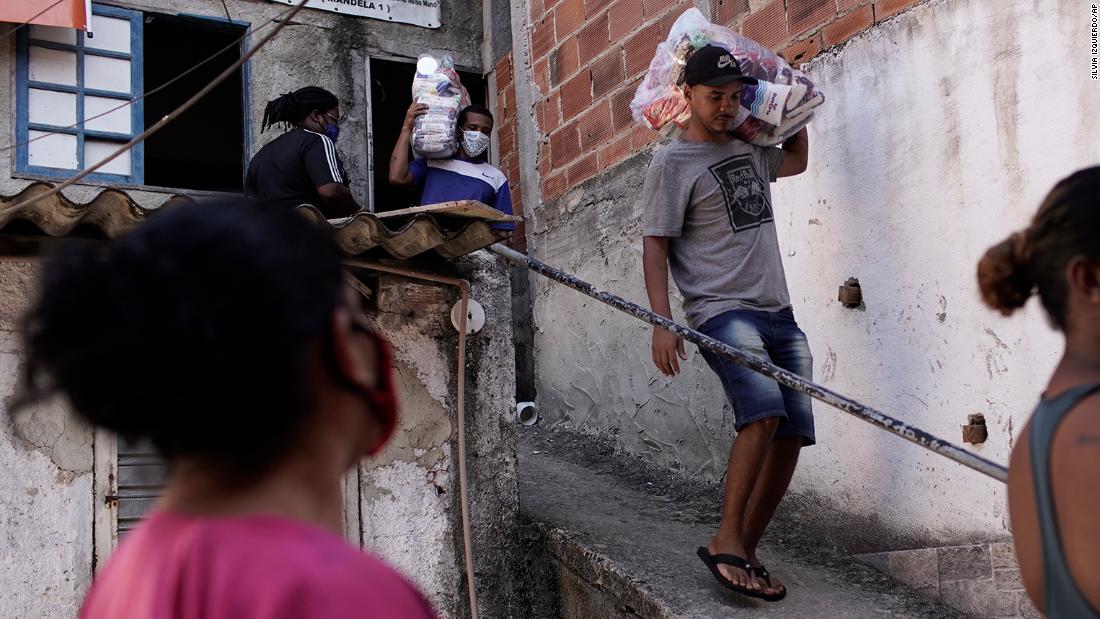
“The consequences of the pandemic are being felt most strongly in Latin America,” the UN World Food Program (WFP) said in a statement. “[Latin America] has seen a nearly threefold increase in the number of people requiring food assistance, and among urban communities in low- and middle-income countries, who are being dragged into destitution by job losses and a precipitous drop in remittances. ” .
In Brazil, a record 7.8 million people lost their jobs between March and May, according to new figures released by the country’s statistical agency, the Brazilian Institute of Geography and Statistics (IGBE).
Since data collection began in 2012, “this has never happened,” IGBE analyst Adriana Beringuy said in a statement. “This means that less than half of the working-age population is working,” added Beringuy.
Economists point to a historic economic downturn in Brazil due to the coronavirus, which has decimated an already struggling economy. But as Brazilian cities try to reopen economic activity, coronavirus cases are skyrocketing. The country has recorded more than 1.4 million cases of the disease according to Johns Hopkins University (JHU), the second highest count in the world behind the United States.
‘Deep deterioration’
Chile’s unemployment rate from March to May reached 11.2%, according to figures from the National Statistics Institute (INE) published on Tuesday. It is the highest level since 2010.
The population outside the workforce increased by 27.4% over a 12-month period, largely influenced by people who were not looking for work, but who were available to work forming the so-called potential workforce, INE said.
Before the pandemic, Chile was rocked by a wave of protests that caused profound shocks to the economy. Since then, the pandemic has hit it hard, ranking seventh worldwide with the highest number of Covid-19 infections and third in Latin America, according to figures from Johns Hopkins University.
“The data shows a profound deterioration that the coronavirus is leaving in employment, family income and economic activity,” said Economy Minister Lucas Palacios on his Twitter account.
“When sanitary conditions improve, we must rebuild the capacity to generate formal and quality jobs with social security. We are working on that,” he said.
Inactive workforce
Before the pandemic, Colombia had some of the highest growth rates in the region, often higher than the Latin American averages in the GDP growth and development index.
This year, Colombia’s unemployment rate for May almost doubled to 21.4% compared to May 2019, according to figures from the national statistics department, DANE.
The rate for 13 metropolitan areas is even higher: 24.5% unemployment, an increase of 13.3% compared to the same month last year, according to DANE.
The number of inactive employees grew to more than 3.3 million people, while the number of people who lost their jobs increased by 2,083,000 during the 12 months, according to DANE.
.